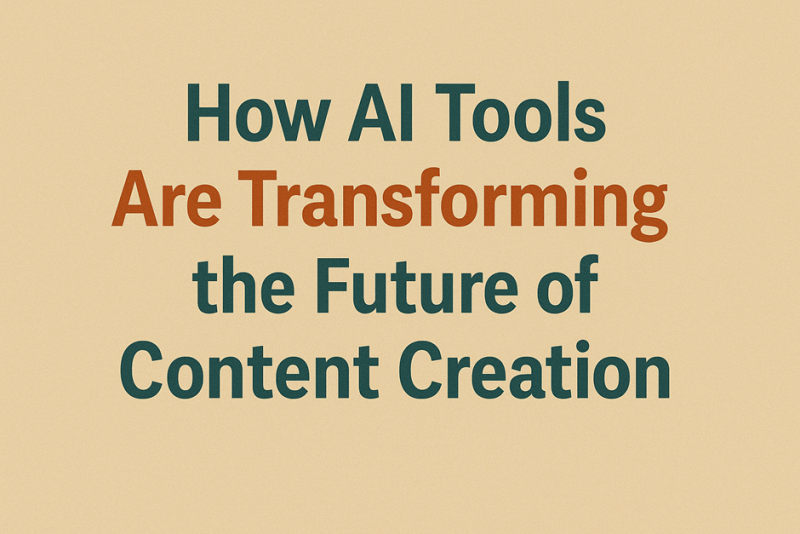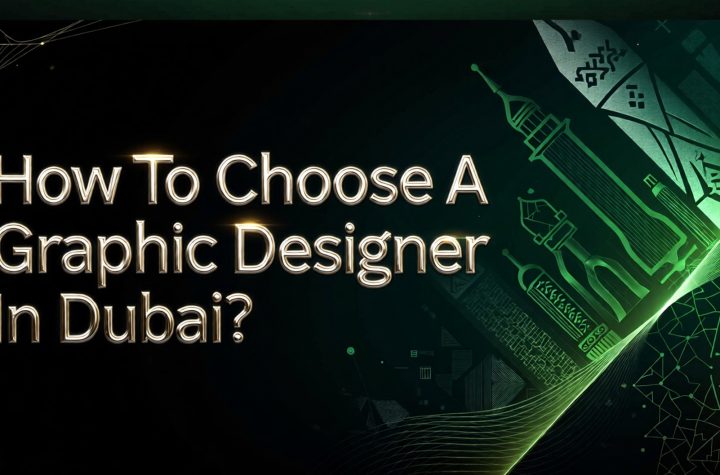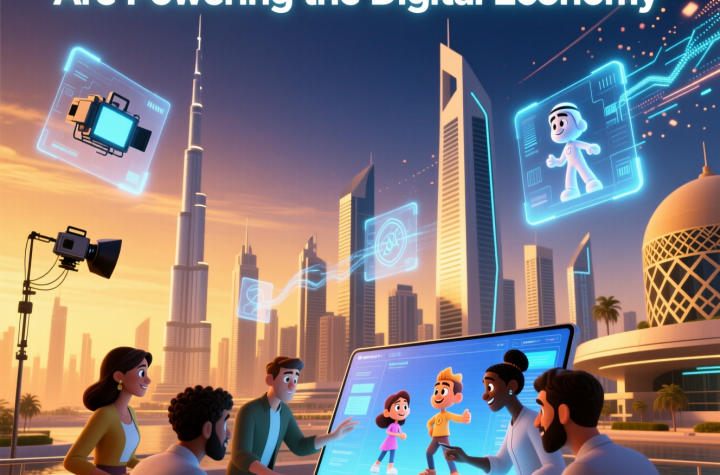
Okay, let’s be honest, AI is everywhere right now. You can’t scroll through your feed or open a blog without someone mentioning how “AI is changing everything.” And, well… they’re not entirely wrong. In the world of content creation, AI has gone from being this shiny, futuristic concept to something we actually use every day like Grammarly fixing our typos or ChatGPT helping brainstorm a headline when our brains decide to take a coffee break.
But here’s the thing, AI isn’t replacing creativity (at least, not yet). It’s transforming our creation methods, speeding up the process, making it more intelligent, and adding a touch of enjoyment. Let’s explore what’s actually going on behind the scenes.
From Blank Page Panic to Creative Flow
You know that moment when you create a new document, look at it for five minutes, and then impulsively choose to tidy up your entire desktop instead, yeah, that’s the infamous blank page syndrome.
Generative AI tools are basically the antidote to that creative freeze. Platforms like ChatGPT, Jasper, and Copy.ai don’t just spit out content; they nudge you forward. They give you that rough first draft, a headline idea, or even a catchy intro to get your brain back in the zone. Sure, sometimes the output sounds like a polite robot, a bit too formal, a bit too “corporate.” But hey, that’s what editing is for. The point is, AI doesn’t steal your creativity; it keeps it from falling asleep at the wheel.
Personalization: The Real MVP
Let’s face it, generic content is dead. Readers today can smell “copy-paste” energy from a mile away. What works now is content that feels personalized, and this is where AI tools absolutely crush it. AI can track what people click on, read, or scroll past and then use that info to help creators make content that actually resonates. For example, if your readers love “budget-friendly travel hacks,” AI predictive analytics will catch that pattern and serve it up on a platter for you. It’s not magic; it’s data done right. And ironically, these algorithms are helping us be more human in how we communicate giving audiences what they actually care about, not just what we think they should.
Visuals Made Easy (Finally)
Now, let’s talk visuals because no one’s going to read your 1,200-word blog post if your header image looks like it was made in 2009. AI tools like DALL·E, Midjourney, and Canva’s Magic Studio are making design ridiculously accessible. You can literally type “a cozy morning coffee aesthetic with sunlight streaming through” and boom you’ve got an image. It’s like having a designer on speed dial who never sleeps (or charges by the hour). Okay, sometimes you’ll get weird results like people with five fingers too many or a cat that looks suspiciously like a potato but overall, it’s saving creators hours of work. The future of visual storytelling is part human, part algorithm, and surprisingly, it’s working out.
SEO That Thinks Like a Human (Sort Of)
If you’ve been blogging for a while, you know SEO used to mean stuffing as many keywords as possible into your post until it read like robot poetry. Thankfully, those days are over. Now, AI-powered SEO tools like SurferSEO or Clearscope can actually analyze intent and not just words. They look at what readers mean when they search, not just what they type. That means your content can finally sound natural while still ranking high on Google.
It’s kind of wild that we’re teaching AI to understand how humans think, and in turn, it’s teaching us how to write better for humans. A full-circle moment, if you ask me.
The Big Questions: Authenticity and Ownership
Here’s where it gets tricky. As amazing as AI tools are, they raise a few uncomfortable questions. Who really “owns” AI-generated content? Can something made partly by a machine still be considered authentic?
These questions don’t have perfect answers yet, but one thing’s clear that AI doesn’t have your lived experiences, your humor, or your emotional depth. It doesn’t know what heartbreak feels like, or how victory tastes after months of effort. It can mimic tone, but it can’t feel it. That’s why the best content still comes from humans who use AI as a tool, not a crutch. The soul of your writing? That’s still all you.
Collaboration, Not Competition
In the future, AI will continue to become more intelligent (and likely more sassy, let’s be honest). However, that doesn’t imply it’s here to take our place. Think of it more like a creative partner, one that helps brainstorm, fact-check, and tidy up the rough edges while you handle the storytelling and emotion. It’s a collaboration, not a takeover. The future of content creation is going to belong to people who know how to dance with AI and not fight it.
Final Thoughts
AI isn’t the villain in the content world but it’s the sidekick we didn’t know we needed. Certainly, it may be somewhat rigid or conventional occasionally, but when utilized by a skilled creator, it becomes a powerful tool for productivity.
Thus, AI will not substitute writers, bloggers or creators in the near future. But it will change how we work, making content creation more accessible, data-driven, and maybe even a little more fun.
Ultimately, individuals aren’t merely seeking impeccable grammar or ideal SEO. They seek a narrative, a bond, and something genuine. Regardless of how sophisticated AI becomes, it cannot genuinely mirror that inherent human quality.




More Stories
Subscription Models for Healthcare: Building an Ecommerce Platform for Supplement Brands
How Ecommerce Brands Can Leverage Social Commerce in 2025
How To Choose A Graphic Designer In Dubai?